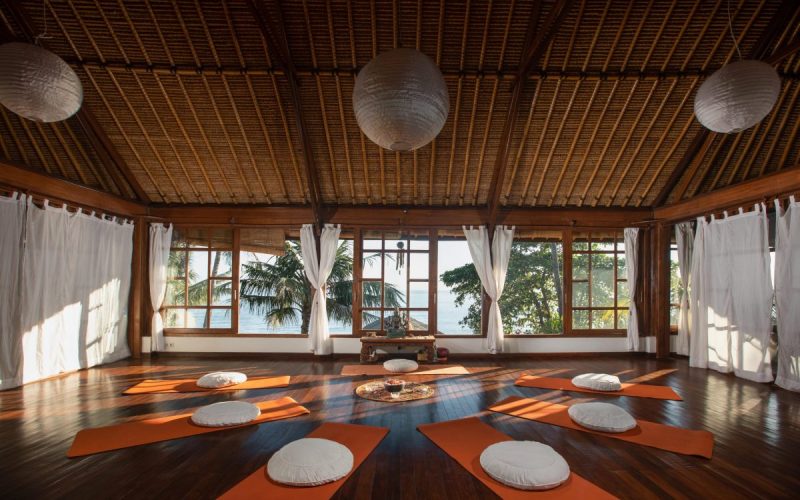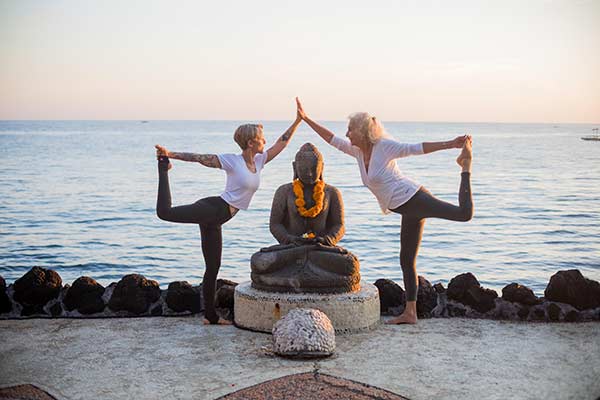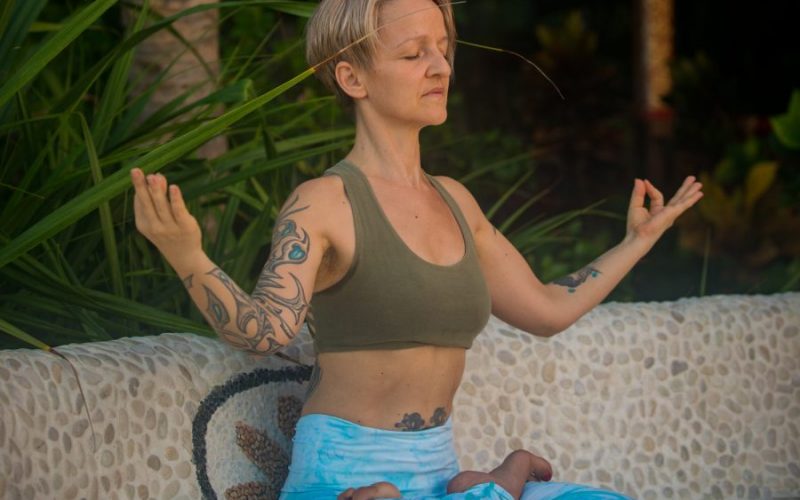Introduction into Yoga and the philosophy of the 8 limbs according to Patanjali
Yoga is an ancient Indian Philosophy of Life and means the connection of body, mind and soul.

Why do we practice Yoga?
- To counter and balance the high demands of daily life
- To reconnect to our inner self and attain a deeper body awareness by daily practice of self-awareness and observing body, breath and mind
- To stay healthy and as a therapeutic way for healing body, mind and spirit
- To calm the mind and learn to experience stillness within
- Yoga is a way to clarity and truth; selfless love supports us on our path to unit
Paths of Yoga
Hatha-Yoga is only one of the different paths of Yoga and the most known in the West. It aims for a balance between body and mind, mainly by physical postures (Asanas), breathing techniques (Pranayama) and meditation.
Further paths of Yoga:
Kundalini-Yoga – Yoga of energy (energy centers – Chakras)
Raja-Yoga – Yoga of mental training, affirmation and visualization
Jnana-Yoga – Yoga of knowledge
Bhakti-Yoga – Yoga of surrendering and love
Karma-Yoga – Yoga of selfless actions

Styles of Yoga
Asthtanga (Sri Pattabhi Jois)
Dynamic and powerful Yoga; several fixed sequences of postures with Vinyasas that link the postures
Iyengar (B.K.S Iyengar)
Strong focus on correct alignment of the body; postures are supported by blocks, bolsters, belts etc.
Sivananda (Swami Sivananda)
Asanas, Pranayama, Relaxation, proper diet, self-reflection and meditation are part of this holistic style of Yoga
Vinyasa Flow
Asanas are linked with movement; dynamic flow of Asanas
Anusara Yoga
Combines different styles of Yoga, including Tantric philosophy and specific alignment principles
Yin Yoga
Asanas are held for a longer time to focus on deeper layers of the tissues; influenced by Chinese meridian theory
Power Yoga
Powerful and intense practice; postures are held longer to strengthen the body; popular in Gyms
Bikram Yoga (Bikram Choudhury)
Yoga is practiced in a heated room (38°) in front of a mirror, fixed sequence of postures
Jivamukti(Sharon Gannon u. David Life)
Dynamic style of Yoga with music that accompanies the flow
AcroYoga
Acrobatic style of Yoga practiced by two people together
Restorative Yoga
The Asana are held in a passive way for several minutes with bolsters, blocks and belts

Yoga is a spiritual path and includes
- Yogic Lifestyle
- Meditation
- Self-reflection and self-awareness
- Health conscious nutritiong
- Philosophy (ancient scriptures like the “Yoga Sutras” – 8 limbs of Yoga by Patanjali – or the “Bhagavad Gita”)
- Ayurveda (the “science of life”)
- Om is seen as the primordial sound of the universe, consisting of three letters A-U-M of the Sanskrit language (an ancient sacred Indian language, in which all religious and philosophical scriptures of Hinduism are written)
- Namaste “The divine in me is greeting the divine in you and thus I know that we are one.”

The 8 Limbs of Yoga according to Patanjali
“Yoga Sutra” – a scripture (written by Patanjali around the 1st century BCE), containing 196 Sanskrit verses that are seen as an essence of the spiritual path of Yoga
1) Yama
5 Codes of conduct in regard to our contact with our environment and other beings
Ahimsa: nonviolence, non harming
Satya: truthfulness
Asteya: no stealing
Brahmacharya: acting in the awareness of the divine
Aparigraha: non-greediness, not demanding more than necessary or important
2) Niyama
5 codes of conduct in regard to ourselves
Sauca: cleanness of body and mind
Santosha: contentment and gratefulness
Tapas: discipline
Svadhyaya: self-study
Ishvara Pranidhana: surrendering to the divine
3) Asana – physical postures
Asanas are physical postures and aim for maintaining health or to restore health, strengthening and stretching the body and increase its capability of resistance; the body should become prepared for meditation and sitting in stillness.
4) Pranayama – breathing techniques
Through pranayama practice, we learn to know our breathing and different breathing techniques help us to let it flow in a fine and long way. Pranayama is a link between body and mind. We can increase and guide Prana (the life force) mainly through the breath.
5) Pratyahara – Withdrawal of the senses towards the inside
Pratyahara means calming down and withdrawing the senses inwards, that otherwise react in an uncontrolled way to outer stimulation in our daily lives.
6) Dharana – concentration and focusing of the mind
The constant focusing of the mind on one point in our body, a mantra (Sanskrit syllable, word or verse) or a transcendental concept, such as the void.
7) Dhyana – Meditation
Experience of pure consciousness and observance, in which the human ego and the thoughts are no longer important; a state of timelessness and connection to the cosmos can be experienced.
8) Samadhi – pure realization, experience of unity
A state of awareness that transcends waking, dreaming and deep sleep; the thinking ceases and unison with the divine is experienced.

